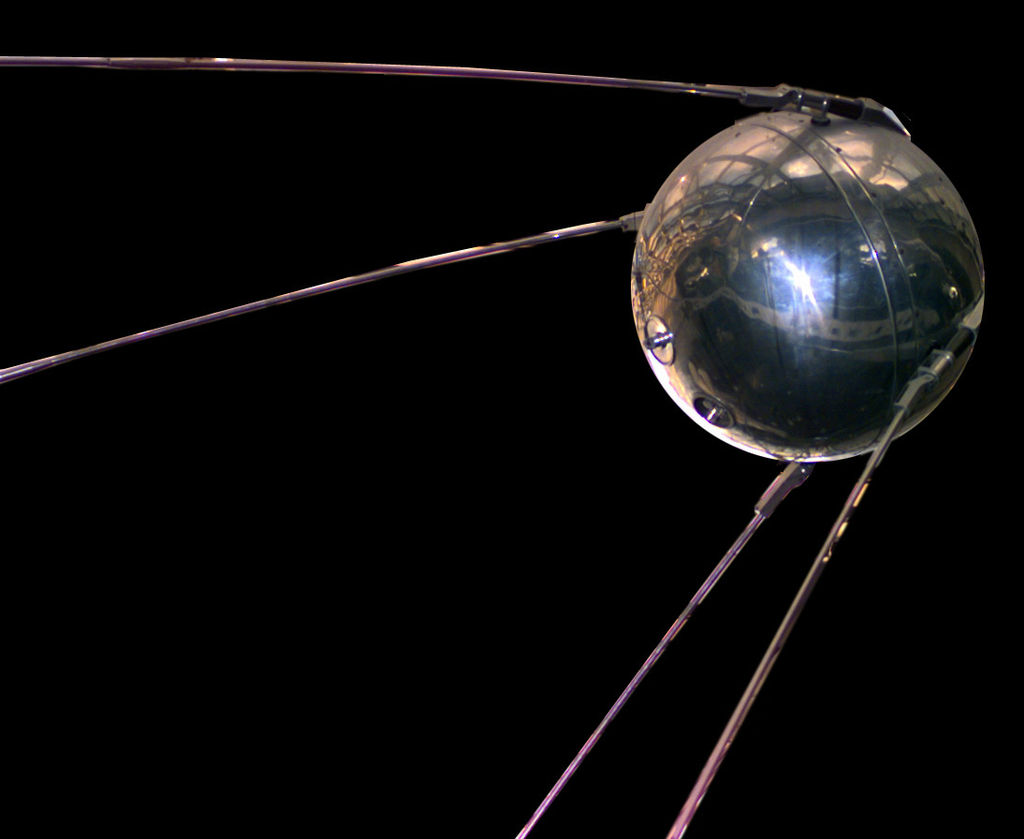Sputnik inizia era spaziale
Sputnik il primo satellite artificiale della storia entrava in orbita il 4 ottobre del 1957 . Lanciato nello spazio dall’allora Unione Sovietica: pesava 83 chili e mezzo e impiegava 96 minuti e 12 secondi per completare un’intera orbita intorno alla Terra, confermando, se mai ce ne fosse stato bisogno, che la Terra non era piatta.
Sputnik e la storia: per molti questa data segnava la fine dell’epoca moderna, iniziata con la scoperta dell’America
e dava il via all’era spaziale.
Il 3 novembre dello stesso anno un secondo Sputnik entrava in orbita con a bordo un passeggero
molto speciale: la cagnetta Laika.
Soltanto il 17 marzo dell’anno successivo il satellite americano Vanguard riuscirà ad immettersi in
orbita. Era iniziata la ‘guerra’ fra Stati Uniti ed Unione Sovietica per la conquista dello spazio.
I sovietici, successivamente, mandarono in orbita altre due cagnette Belka e Stelka, fino a quando la
tecnologia e i dati in loro possesso consentirono di inviare oltre l’atmosfera il primo essere umano.
Il 12 aprile del 1961 Yuri Alexeievich Gagarin, a bordo della capsula Vostok 1, rimase in volo per
tre ore attorno al nostro pianeta. Per oltre un giorno vi rimarrà, invece, German Stefanovic Titov
che decollò il 6 agosto 1961. Frattanto gli statunitensi tentavano di recuperare il tempo perduto, causa Sputnik, e si preparavano allo sbarco sulla Luna, con i programma Mercury, Gemini e Apollo…
(continua)
English version
On October 4, 1957, the first artificial satellite in history entered orbit. Itsname was Sputnik
and had been launched into space by the Soviet Union: it weighed 83 and a half pounds and employed 96 minutes and 12 seconds to complete an entire orbit around the Earth.
On November 3 of the same year a second Sputnik entered orbit with a passenger on board
very special: the dog Laika.
Only on March 17 of the following year will the American satellite Vanguard manage to enter
orbit. The war between the United States and the Soviet Union had begun to conquer space.
The Soviets subsequently sent two more dogs Belka and Stelka into orbit, until the
technology and the data in their possession made it possible to send the first human being beyond the atmosphere.
On April 12, 1961 Yuri Alexeievich Gagarin, aboard the Vostok 1 capsule, remained in flight for
three hours around our planet. For more than a day, German Stefanovic Titov will remain there
which took off on August 6, 1961. Meanwhile the Americans tried to make up for lost time and yes
they were preparing for the moon landing, with the Mercury, Gemini and Apollo programs.
(to be continued)
Latina Versio
In Octobre IV, MCMLVII, primum artificialis satellite in orbita historiam intravit. Suo nomine Sputnik
in Fontes iuris Germanici antiqui ictus ex spatio et erat: LXXXIII et in ea auri pondo libras et dimidium usus XCVI conficere orbem totum secundis minuta XII circa terram.
In Novembre III De eiusdem anni circulum alter Sputnik intravit in tabula cum a viatoribus
ipsum speciali: Laika canis.
Die XVII Aprilis anni solum de his erit administrare intrare Americanus satellite PRAEVENTORES
orbita ponendum simulat. Quod bella in Fontes iuris Germanici antiqui inter Civitatum Foederatarum et deinde iam vincere acie locus.
Postea misit duos Belka Sovietica lunamque et in orbita Stelka donec notitia technology potest mittere in possessionem trans primi hominis urna.
Die Aprilis XII, MCMLXI Yuri Alexeievich Georgius Gagarin, necatus est Vostok I capsulam, in fuga enim manere planeta tres horas circuitu nostro. Amplius dies German Titov manebit Stefanovic
quibus deponebamus Augusti VI, MCMLXI. Interea amissum tempus lacus explere conatus sum
portum parat lunam sunt, de Mercurio Mercurius geminorum atque Apollo progressio.
(Continuat)
